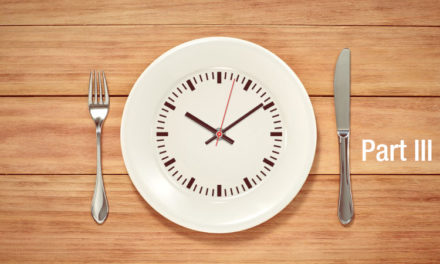A common theme you hear from many dietary experts is that there is a single “best, healthiest, and most effective” way to eat.
From low carb diets, to high carb diets, from the Paleo diet to the ketogenic diet, the message is clear: no matter who you are, no matter your goals, your lifestyle, how much you move, no matter anything about you, there is only one way to eat. One single dietary style that is the absolute best for losing weight, building lean muscle, and improving your health. And one single dietary style that is the best for everyone.
Here at Zach Moore Training we wish this were true. If it were, eating healthy would be much easier and much more straightforward. But the human body is too complex and too unique.
We come in many different shapes and sizes. We lead dramatically different lives. We have our own unique metabolic strengths and weaknesses. And many of us live with medical issues that fundamentally change the way our bodies digest, absorb, store, use, and react to certain types of foods.
The reality is, we each have our own unique dietary needs and each of us will thrive off of a different dietary style.
And this means, to build the leanest, strongest, healthiest version of you, you need a dietary style that is built specifically for you.
A dietary style that determines what types of foods you need to eat, and how much of these foods you need to eat, based on your goals, your medical issues, your body type, your activities, and your food preferences.
Factor 1: Your Primary Goals Right Now
The first factor you need to consider when developing your personal dietary style is your primary fitness goal right now.
If it helps, think of building a lean, strong, healthy body as a three-phase process, with each phase of the process addressing different primary and secondary fitness goals. (This is a simplification, but helps provide perspective.)
In the first phase, the primary goal is generally to reduce body fat with secondary objectives often including building a foundation of strength and improving general health.
In the second phase, the primary goal often shifts away from strictly weight loss and begins to focus more on toning and sculpting the body and / or building more advanced levels of strength, increasing joint health, and stabilizing many markers of internal health.
And the third phase is generally an optimization phase. Here, the goals become to sculpt the physique to its aesthetic peak, bring strength up to its highest level, maximize functional capabilities, and improve internal health to their best possible.
Continuing to identify your primary fitness goal as it continues to change is important because each of these different phases require different (potentially very different) ways of eating, ratios, and total amounts of lean meats, fish, fruits, non starchy vegetables, starchy vegetables, beans, and legumes.
Factor 2: Underlying Medical Issues
The second factor you need to consider when building your personal dietary style is any underlying medical issues you may be dealing with.
For instance, if you live with diabetes or Polycystic Ovarian Syndrome, your body has become insulin resistant and your dietary approach needs to emphasize foods that are lighter in carbohydrates.
If you have high cholesterol, high blood pressure, and high blood triglyceride levels, you need to limit how much red meat and butter you consume.
If you have a hypoactive (under) or hyperactive (over) thyroid you are going to need to adjust the total number of calories you consume on a daily and weekly basis accordingly.
And if you have any specific food allergies, such as celiac disease (gluten allergy) or a shellfish allergy, for example, you are going to need to omit those foods from your diet.
And these are just a few examples of the many ways an underlying medical issue can influence your dietary approach.
Factor 3: Your Body Type
The third factor you need to consider when building your personal dietary style is your natural body type.
If you are naturally lean you will be able to include more carbohydrate rich foods in our dietary approach and ingest slightly more total calories on a daily and weekly basis.
While if you find you gain weight easily and hold onto body fat more stubbornly, you will want to emphasize a diet that is higher in protein and healthy fats and consume slightly fewer total calories on a daily and weekly basis.
And for those of us who have moved onto the lean muscle building phase of our journey, those of us who struggle to build and hold onto lean muscle will need to consume more protein and overall calories than those of us who are naturally more muscular.
Factor 4: Your Daily Activity Level
The fourth factor you need to consider when building your personal dietary style is how active you are on a daily basis.
Do you exercise on a regular basis? If so, how often and for how long? What types of exercise do you do? Do you primarily resistance train or do cardiovascular exercise? Or do you do a combination of both?
Do you work a more physically demanding job or does your job require you to sit for long periods of time?
How much do you walk on a daily basis?
Are your weekend activities more physically demanding or are they generally more leisurely?
The answers to these questions will significantly impact what types of foods you should be eating and the total number of calories you should be consuming on a daily and weekly basis.
Factor 5: Your Food Preferences
The fifth factor you need to consider when building your personal dietary style are your food preferences.
Part of building a healthy and successful diet is learning to eat foods you may not be the biggest fan of.
For instance when most of us think about the foods we love we think of pizza, pasta, and chocolate, not beets, kale, and grilled chicken.
But learning to make these healthy foods the backbone of your diet is an essential part of building a lean, strong, healthy body.
However, there may be a few specific foods you simply cannot stand.
If you try to follow a diet that includes too many of these foods you will reach a point where that dietary style becomes simply unbearable.
Then, no matter how good your initial results may have been, you are going to abandon that diet. And when you do, there is a strong chance you are going to fall back on the unhealthy eating habits you are familiar with, regain the weight you have lost, and lose much of the progress you have made.
This is why it is so important to build your dietary style around your food preferences from the start.
Summing It All Up
To build a lean, strong, healthy body you have to follow a healthy and nutritious dietary approach.
And while we genuinely wish there was one “best” and “most effective” dietary style, as we said, the human body is too complex and too unique.
You need to develop your own dietary approach and base it on your goals, your medical history, your body type, your activities, and your food preferences.
This will take effort and thought (nothing worthwhile in life comes easy) but a personalized dietary approach will establish a sustainable dietary foundation and lay the groundwork for you to finally build a lean, strong, and healthy body.
Your exercise and dietary coaching team.
Zach Moore Training.
And everyone, if you found today’s article insightful, inspiring or enlightening and you have a friend, family member, colleague or peer who you think would benefit from what we’ve talked about here today, pass on this email please.
One of the best things you can do for those you care about is helping them to build a healthy and great looking body. A body that is strong, capable and moves without pain and a body in which they feel confident and happy.





